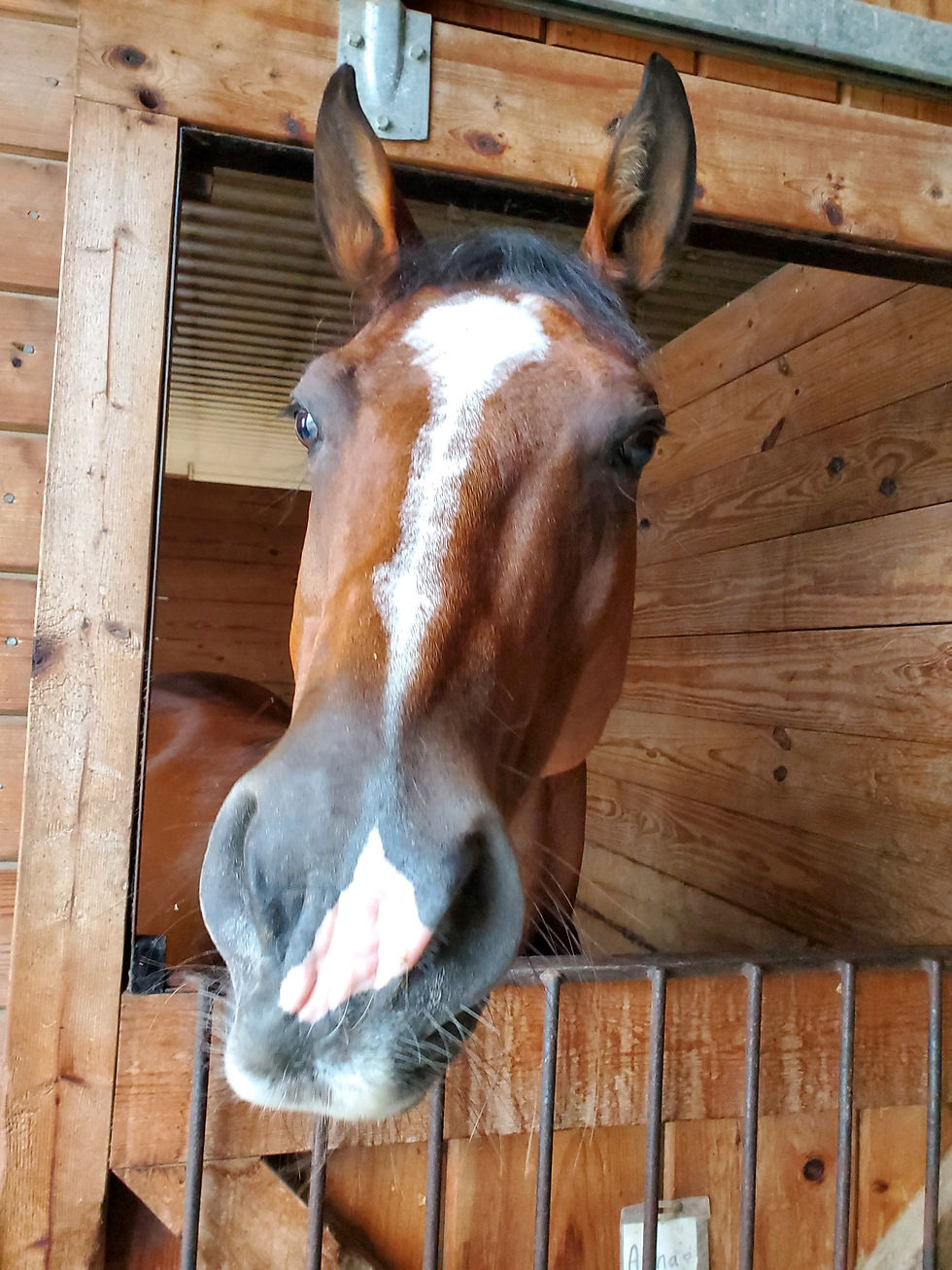Bodywork - A way to bond with your horse
- Diane Jones

- Aug 7, 2021
- 3 min read
Updated: Dec 17, 2024

Everyone seems to have a different view on the necessity and effectiveness of bodywork on horses. There are many treatments, and every practitioner has a unique approach. Some are effective, and some aren't. It's hard to know what treatment to choose, and then there's the issue of cost.
I experienced many benefits to human bodywork, for example, chiropractic care, acupuncture, and massage, so it wasn't a leap for me to have a massage therapist work on Rudy when his back was sore. It was also easy for me to see the benefits of chiropractic care. Even though horses cart us around somewhat willingly, they are not designed to be ridden, raced, evented, etc. Horses bear the brunt of human desire and will.
My horse gets a lot of bodywork. At times, I've seen a clear benefit, and other times I questioned the effectiveness. Rudy receives regular chiropractic care. Over the past year, he's also had many PEMF, pulsed electromagnetic frequencies, sessions, and massage therapy.
These treatments are in addition to the work I do on him. I naturally gravitated to massaging Rudy. He's an in-your-pocket horse and enjoys human touch. Aside from massage, I also try various Masterson techniques with him. I have Jim Masterson's book, Beyond Horse Massage. I study it and then practice what I learned on Rudy.
Masterson feels like magic to me. I love how it often looks like nothing, yet the effect on the horse is profound. It's incredible to hoover your fingers over a spot and watch the horse rapidly blink; then, as you linger, they begin a series of releases, sometimes culminating in a big 'ole eyes rolling back in their head yawn.
I also own an EquiRelease Equine Fascia Massage Gun. At this point, you might think all of this is overkill. Maybe but Rudy is generally so receptive and communicative it brings me joy to help him feel better.
I enjoy using all of the different techniques, but Masterson is my favorite. It forces me to slow down, to be in the moment, and to relax. If my mind is distracted or my body carries tension, the technique doesn't work. I find I often enter into a meditative state when practicing the skill.
I empty my mind, release all tension from my fingers, hands, and arms, and as I slowly glide my fingers down the bladder meridian, I watch Rudy's face for signs of tension. Rapid blinking is one indication, and when I see him do this, I stop, relax more deeply, focus on slow belly breaths and wait for a release.
Releases can be subtle or profound: a lick and chew, a snort, a sneeze, a shake of the head, neck, or body, or a yawn. These responses indicate the horse is releasing tension. Rudy often shifts his weight or rocks forward and back to help himself release the stress. It's essential to allow the horse to move and to stay with them as they process the release.
He has become so accustomed to me helping him; he often positions the part of his body he wants me to work on directly in front of me. He recently did this with his massage therapist as well. She had transitioned from working on his hind end to right his shoulder. Rudy quickly directed her back to his rump by touching her arm with his muzzle several times. After five or six touches, we realized what he was communicating. She moved back to his hip, and he dropped his head and sighed.
Bodywork has helped me tune into equine communication. Horses are constantly communicating, but humans fail to pick up on most of this vital information. I have come to enjoy the challenge of quieting myself to listen to what Rudy tells me. I've noticed that because I am better at understanding him, he's become bolder in communicating with me.
Next time you're looking for something different to do with your horse, try doing some bodywork. It likely will be relaxing for both of you, potentially beneficial to your horse, and it may improve your relationship.
#rudy #rudytherudster #equinebodywork #bond #connection #masterson #equinemassage #newblogpost #followme





Comments